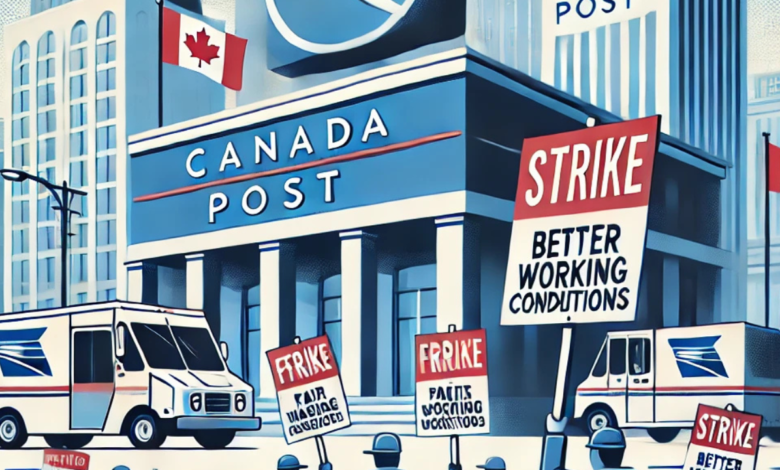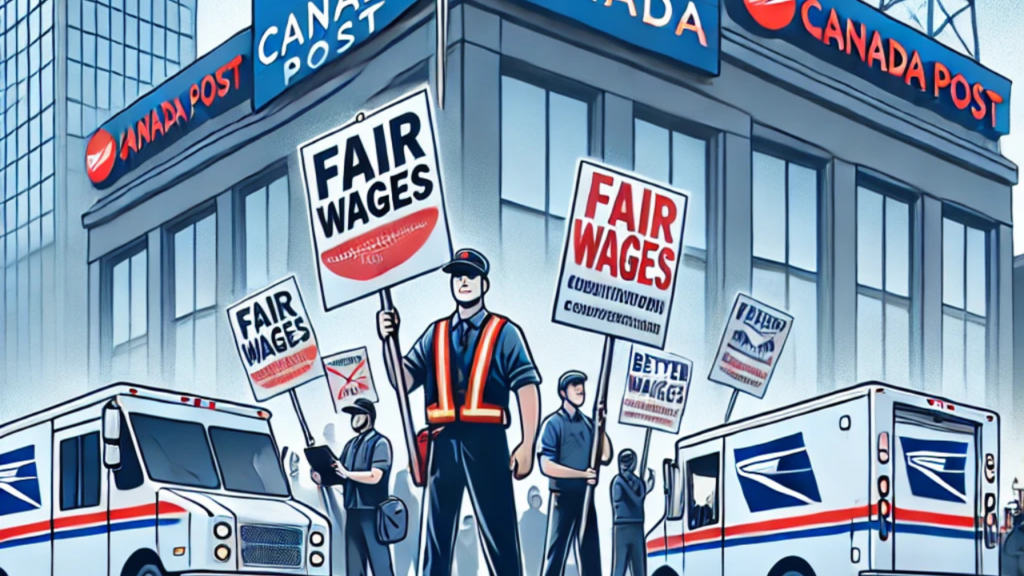Canada Post Strike: Impact, Causes, and What It Means for You

Introduction
Canada Post, a cornerstone of communication and commerce in Canada, plays a vital role in connecting individuals, businesses, and communities. From delivering personal letters to facilitating e-commerce, its services are essential. However, labor strikes have periodically disrupted its operations, leaving customers and stakeholders in a state of uncertainty. The latest Canada Post strike has sparked widespread attention, underscoring the challenges faced by employees and management alike.
Understanding the reasons behind this strike, its broader impact, and potential solutions is crucial for Canadians. As labor disputes in essential services can have far-reaching consequences, this article delves into the factors driving the strike and its implications for individuals, businesses, and society at large.
The Background of Canada Post Strikes
Labor disputes at Canada Post are not new. Over the years, strikes have highlighted ongoing tensions between employees and management. Historically, these strikes have revolved around core issues such as fair wages, working conditions, and job security.
One notable instance was the 2018 rotating strike led by the Canadian Union of Postal Workers (CUPW). The strike lasted several weeks and centered on concerns over pay equity and worker safety. While negotiations eventually led to a resolution, they also highlighted systemic challenges within the organization.
The current strike stems from similar tensions. In recent years, Canada Post employees have raised concerns about the increasing workload due to the rise of e-commerce, stagnant wages amid inflation, and the lack of job security in the face of automation. These factors have created an environment where employees feel undervalued and overburdened, prompting collective action.
Unions like CUPW play a pivotal role in these disputes, advocating for employees’ rights and negotiating with management. However, achieving a balance between employee demands and operational efficiency remains a persistent challenge.
Reasons Behind the Strike

The root causes of the Canada Post strike are multifaceted, involving employee grievances, management challenges, and broader economic factors.
Employee Concerns
Canada Post employees have long expressed dissatisfaction with their wages, which they argue have not kept pace with inflation. Many workers face increasing financial pressure as the cost of living rises. Additionally, working conditions have become a significant concern. Employees report heavier workloads, particularly with the surge in e-commerce during the pandemic, leading to physical and mental strain.
Job security is another critical issue. With automation and digital transformation reshaping the postal industry, many workers fear being replaced by technology. These concerns have fueled calls for better protections and assurances from management.
Management Challenges
From the management perspective, Canada Post faces its own set of hurdles. The organization operates in a competitive environment, with private couriers and digital alternatives reducing its market share. Financial constraints further complicate its ability to meet employee demands while maintaining profitability.
Balancing employee needs with operational efficiency is no small task. Management must address worker grievances without compromising service quality or escalating costs, which could alienate customers.
Economic and Political Factors
The broader economic landscape also influences the strike. High inflation has made wage negotiations more contentious, while government involvement adds another layer of complexity. Policymakers must weigh the interests of employees, management, and the public when mediating disputes in essential services like Canada Post.
Impact of the Strike
The repercussions of the Canada Post strike are far-reaching, affecting individuals, businesses, and society as a whole.
On Individuals and Businesses
For individuals, the strike means delays in receiving mail and packages. This can be particularly problematic for those awaiting time-sensitive items such as medication or legal documents. Businesses, especially small and medium enterprises reliant on postal services, face disruptions in order fulfillment and customer satisfaction. E-commerce platforms are particularly vulnerable, as delays can erode consumer trust and lead to financial losses.
On Canada Post Employees
Strikes are not without cost for employees. While collective action is essential for advocating their rights, it also results in lost wages during the strike period. Moreover, prolonged disputes can strain morale and create uncertainty about the future.
On the Economy and Society
The strike’s economic impact extends beyond Canada Post. Disruptions to mail and parcel delivery ripple through various sectors, slowing down commerce and affecting consumer confidence. Remote and rural communities, which rely heavily on Canada Post for essential services, are particularly hard-hit. These challenges underscore the importance of resolving labor disputes swiftly and effectively.
Potential Resolutions and Future Implications
Finding a resolution to the Canada Post strike requires a multi-pronged approach, involving negotiation, policy changes, and long-term planning.
Negotiation and Mediation
Open dialogue between employees, unions, and management is crucial. Third-party mediators can play a vital role in bridging the gap and facilitating compromise. Transparent communication and goodwill on both sides are essential for reaching a mutually beneficial agreement.
Policy and Structural Changes
Addressing recurring labor disputes may require systemic reforms. These could include updating labor policies to reflect modern workplace challenges, investing in employee training for emerging technologies, and implementing measures to improve working conditions.
Lessons for the Future
The Canada Post strike serves as a reminder of the need for sustainable solutions in essential services. Balancing employee welfare with operational efficiency is critical for maintaining public trust and service reliability. By addressing root causes and embracing innovation, Canada Post can build a more resilient and equitable system.
Conclusion
The Canada Post strike highlights the complex interplay of labor rights, management challenges, and economic pressures in essential services. Understanding the reasons behind the strike, its impact, and potential solutions is vital for Canadians. While labor disputes are inevitable in dynamic organizations, a balanced approach can ensure fair treatment for employees and uninterrupted services for the public.
As Canada Post navigates these challenges, it has an opportunity to modernize its operations, improve employee satisfaction, and reinforce its role as a trusted national service provider. By learning from past and present disputes, the organization can pave the way for a more sustainable future.
FAQs
Why do Canada Post employees go on strike?
Canada Post employees often strike over issues such as wages, working conditions, and job security. Rising workloads and financial pressures also contribute to labor disputes.
How does the strike affect Canada Post services?
Strikes typically result in delays for mail and package deliveries, disrupting services for individuals and businesses alike.
What is the role of CUPW in the strike?
The Canadian Union of Postal Workers (CUPW) advocates for employee rights and negotiates with Canada Post management to address grievances and reach agreements.
How long do Canada Post strikes usually last?
The duration of a strike varies, depending on the complexity of the issues and the willingness of both parties to negotiate.
Can Canada Post still deliver essential items during a strike?
Yes, Canada Post often prioritizes essential items like medications during strikes to minimize disruption to critical services.
You May Also Read: https://topusanetwork.com/penzu/

